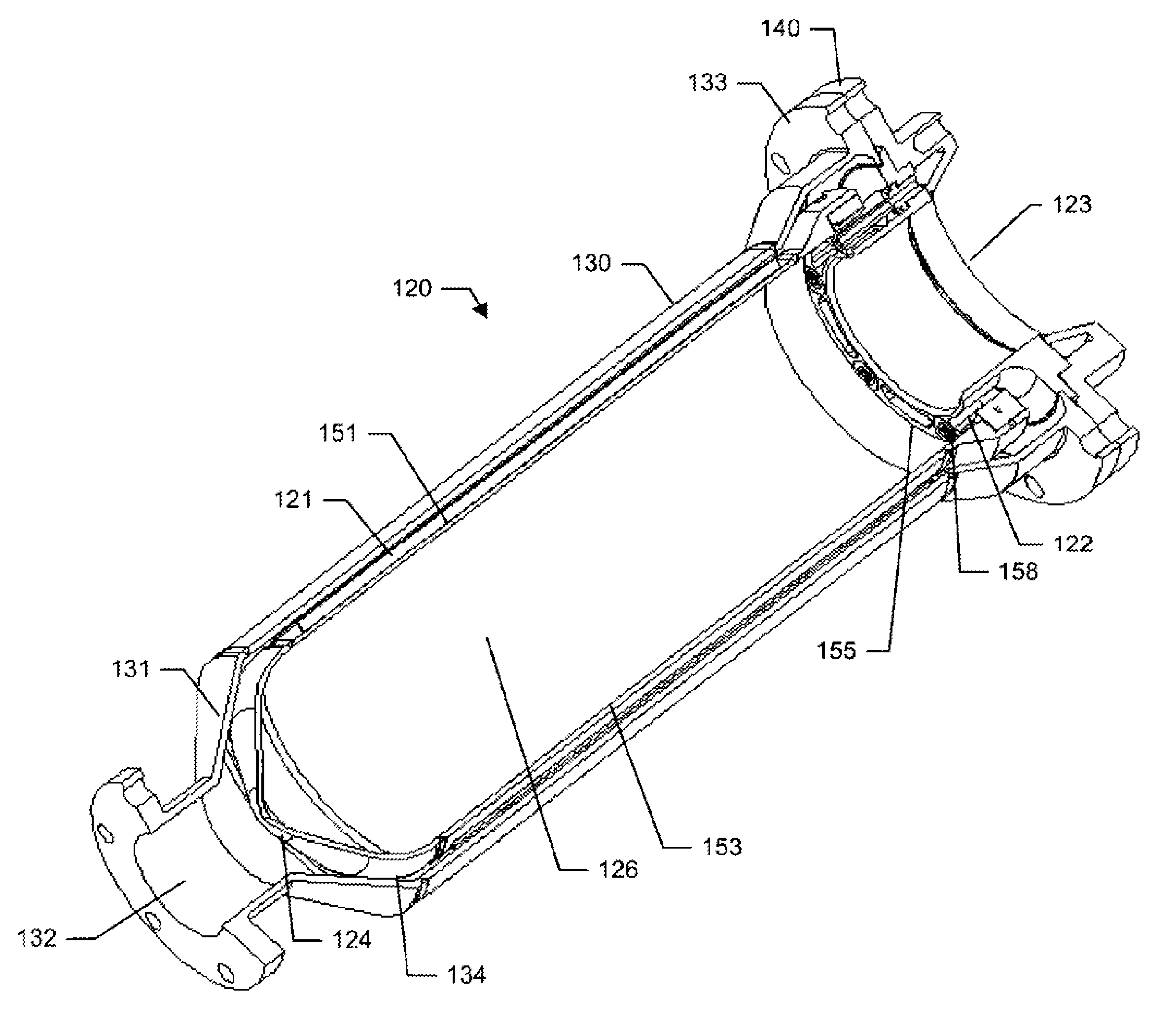Stagnation point reverse flow combustor for a combustion system
a combustion system and reverse flow technology, applied in the field of combustion systems, can solve the problems of large pressure loss in the process, environmental pollution, pollution raising public concerns,
- Summary
- Abstract
- Description
- Claims
- Application Information
AI Technical Summary
Benefits of technology
Problems solved by technology
Method used
Image
Examples
first embodiment
[0065]FIGS. 11 and 12 illustrate a combustor assembly 120 for implementing the above described technology into a combustion system such as a boiler or a gas turbine. FIGS. 13–17 illustrate a combustor assembly for use in a jet engine system. Combustor assembly 120 includes primary combustor vessel 121 which has a proximate end 122 and a distal closed end 124 defining a combustion chamber 126. Proximate end 122 may define combustion products exit opening 123. Combustion products exit opening 123 is preferably concentrically positioned within vessel 121. Reactants, which primarily are a fuel supply and an oxidant supply are provided into the combustion chamber for combustion. The fuel may be either in a gas or liquid state and the oxidant from an oxidant supplier which is preferably compressed air from a compressor but may be from any external source such as a fan. An igniter (not shown) ignites the reactants creating a flame and combustion products. Due to the geometry of primary com...
second embodiment
[0069]FIGS. 13–17 illustrate the combustor assembly for use with a turbine system incorporating a shaft for driving a compressor. In this embodiment, outer casing or secondary housing 130 includes an outer sleeve 172 and an inner sleeve 173. Inner sleeve 173 is offset from outer sleeve 172 defining a combustor vessel cavity 174 for receiving combustor vessel 180. Internal sleeve 173 is preferably cylindrical having an interior defining a shaft channel 175 for receiving turbine compressor shaft 176. Combustor vessel 180 is preferably a torus. The torus configuration defines an interior wall 186 and an exterior wall 188 both having an interior portion and is positioned within combustor vessel cavity 174 such that an outer air channel 182 is defined between the exterior wall of combustor vessel 180 and outer sleeve 172 and an inner air channel 184 is defined between the interior wall of combustor vessel 180 and inner sleeve 173. Also air-fuel manifold consists of a first air-fuel manif...
PUM
 Login to View More
Login to View More Abstract
Description
Claims
Application Information
 Login to View More
Login to View More - R&D
- Intellectual Property
- Life Sciences
- Materials
- Tech Scout
- Unparalleled Data Quality
- Higher Quality Content
- 60% Fewer Hallucinations
Browse by: Latest US Patents, China's latest patents, Technical Efficacy Thesaurus, Application Domain, Technology Topic, Popular Technical Reports.
© 2025 PatSnap. All rights reserved.Legal|Privacy policy|Modern Slavery Act Transparency Statement|Sitemap|About US| Contact US: help@patsnap.com



